Picture this: you’re about to embark on a new construction project, and one of the key decisions you need to make is selecting the right roofing materials for flat roofs.
You start researching, only to find that there are numerous options available. It can be overwhelming!
Not to worry – in this blog post, we’ll provide a comprehensive look at the benefits and drawbacks of various roofing materials for flat roofs, including EPDM, TPO/PVC membranes, modified bitumen cap sheet roofing, built-up roof systems and more.
We’ll dive into topics such as EPDM roofing material, TPO and PVC membranes, modified bitumen cap sheet roofing, built-up roof systems, standing seam metal roofs, liquid-applied systems and more.
Additionally, We’ll discuss the importance of regular inspection & maintenance practices for your chosen flat roofing material. And lastly,
We will also address inappropriate materials for flat roofs so that you can avoid potential risks associated with using unsuitable products.
At the conclusion of this enlightening journey through flat roofing materials, you’ll have obtained useful knowledge to aid in making sound decisions when selecting the ideal option for your particular requirements.
Table of Contents:
- EPDM Roofing Material: A Durable and Flexible Choice of Roofing Materials for Flat Roofs
- TPO Roof Material: The White Knight of Flat Roofs
- Modified Bitumen Cap Sheet Roofs: A Flexible and Weather-Resistant Alternative
- Built-Up Roof (BUR) Systems: A Comprehensive Guide
- Applied Roof Coatings: A Comprehensive Overview
- Standing Seam Metal Roofs for Flat Surfaces
- Self-Adhering Membrane Residential Roof Systems
- Regular Inspection & Maintenance Practices for Flat Roofs
- FAQs in Relation to Roofing Materials for Flat Roofs
- Conclusion
EPDM Roofing Material: A Durable and Flexible Choice of Roofing Materials for Flat Roofs
Let’s talk about EPDM, shall we?
EPDM, short for Ethylene Propylene Diene Monomer, is a synthetic rubber membrane that has become a popular choice in the roofing industry. This black beauty is known for its extreme durability, with some roofs lasting up to 30 years.

Advantages of Using EPDM for Flat Roofs
So, why should you consider EPDM as your go-to roofing material for flat roofs?
- Durability: As mentioned earlier, it can last up to three decades – now that’s impressive.
- Versatility: Its flexibility even at lower temperatures makes it suitable for various climates.
- Eco-friendly: It’s recyclable and energy-efficient due to its ability to insulate buildings effectively.
Installation Process and Maintenance Requirements
The installation process involves rolling out the EPDM membrane onto your roof deck and adhering to or mechanically fastening it down. Pretty straightforward if you ask me.
Maintenance-wise? You’re in luck.
EPDM roofs require very little upkeep, just regular cleaning and inspections.
In case of any damage, patching up the membrane is a breeze.
If you’re seeking a strong, supple flat roofing material that’s effortless to set up and keep in good condition, EPDM could be your go-to solution.
Sources: buildings.com
TPO Roof Material: The White Knight of Flat Roofs
TPO, or thermoplastic polyolefin, is a single-ply white membrane that has become quite popular in the roofing industry, especially for flat roofs.
But why?
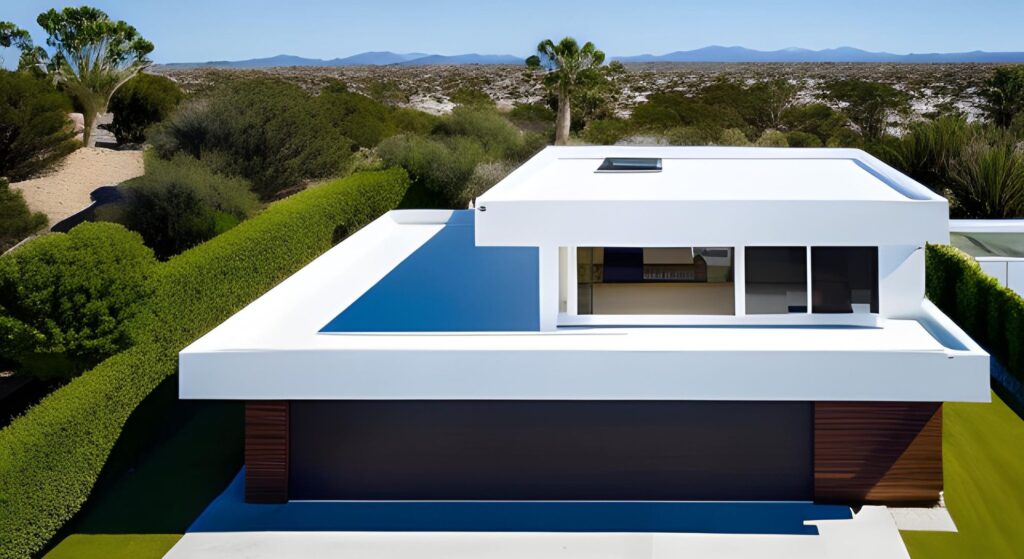
Benefits of Choosing TPO Roof Systems
Eco-friendliness: TPO roofing material is recyclable and energy-efficient due to its reflective properties.
Durability: It resists punctures, tears, and UV damage while providing excellent weather resistance.
Affordability: Falling within the 10%-20% cost range compared to other methods makes it an attractive option for budget-conscious builders.
Limitations and Considerations When Selecting TPO
- The quality of TPO membranes can vary, so choose wisely from reputable manufacturers.
- TPO may not be suitable for all buildings due to its heat-welded installation process. Consult with professionals before making your decision.
- Lifespan typically ranges between 15-20 years; however, proper maintenance can extend this period significantly.
In conclusion, consider TPO roof material for your flat roof project.
It’s affordable, durable, and eco-friendly – a triple threat in the world of roofing materials for flat roofs.
Before committing to a material, it is wise to evaluate the advantages and disadvantages of each option.
PVC Flat Roof Systems: Lightweight and Cost-Effective
So, you’re considering a PVC flat roof system?
Great choice.
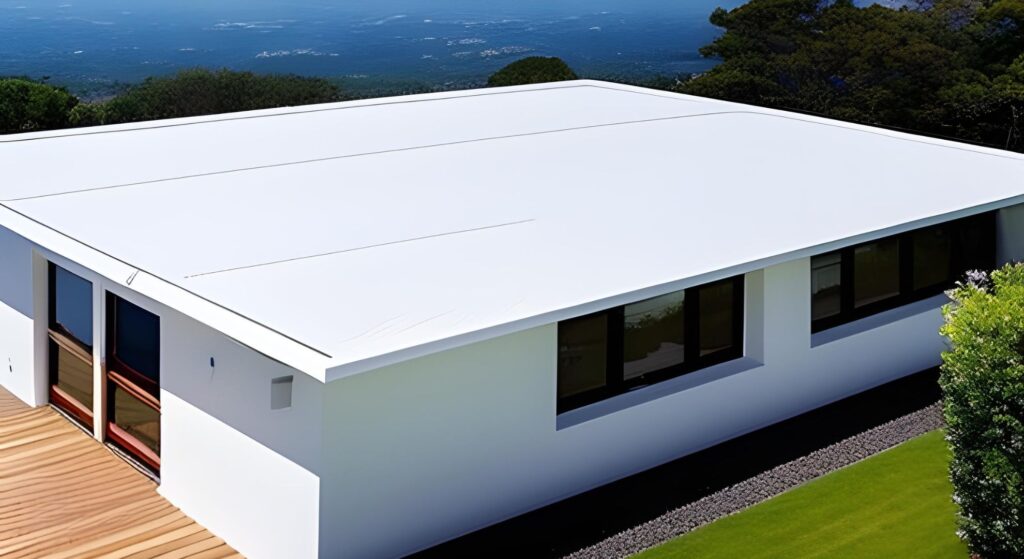
PVC roofing shares many similarities with TPO, such as being lightweight and offering excellent resistance against rainwater penetration.
The best part? Both materials have lifespans of around 20 to 30 years.
Comparing PVC vs. TPO Roof Materials
While both options are cost-effective, there are some differences worth noting:
- Durability: PVC is known for its superior resistance to chemicals, making it ideal for commercial buildings that emit harmful substances.
- Eco-friendliness: TPO roofs tend to be more environmentally friendly due to their recyclable nature.
- Cool Roofs: While both materials reflect sunlight well, TPO’s white surface may provide better energy efficiency in hotter climates.
Factors Affecting the Performance of PVC Roofs
To ensure your new PVC roof performs at its best, consider these factors:
- Maintenance: Regular inspections can help detect issues early on and prevent costly repairs down the line.
- Ventilation & Insulation: Adequate ventilation helps maintain optimal temperature levels while proper insulation prevents heat loss or gain through the roof deck.
- Slope & Drainage: A well-designed slope ensures efficient water runoff, reducing the risk of ponding and leaks.
So there you have it.
PVC flat roof systems offer a cost-effective, durable solution for both commercial and residential roofing projects.
Ready to make your decision? Compare PVC and TPO costs here.
Modified Bitumen Cap Sheet Roofs: A Flexible and Weather-Resistant Alternative
Let’s take a trip back to the 1960s when modified bitumen cap sheet roofing emerged as an alternative to traditional built-up roofs (BUR). But what makes it stand out?
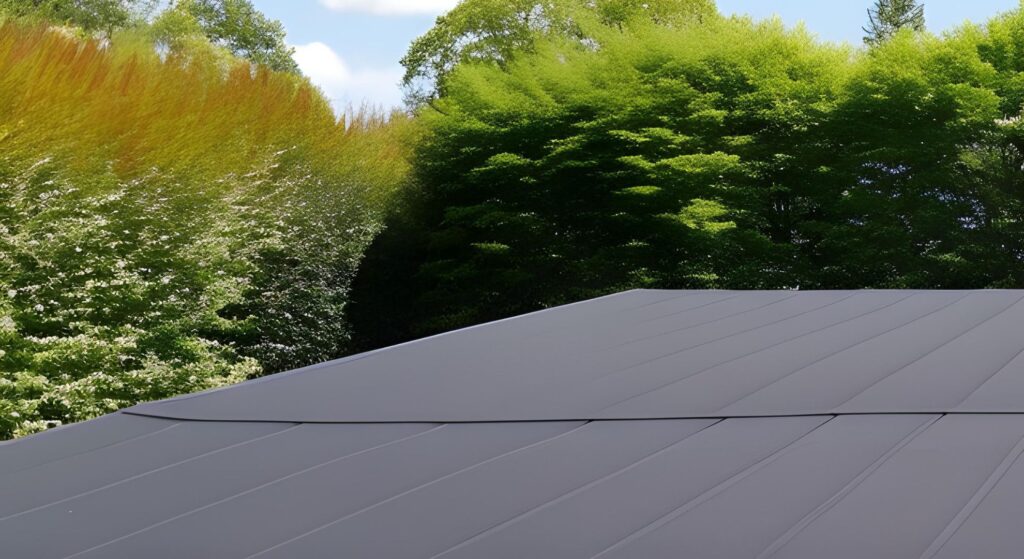
Polymer-Reinforced Roof Wear Layers or Cap Sheets Advantages
The secret sauce is in its elasticity. Modified bitumen improves flexibility during low temperatures, giving them better weather-resistant capabilities than BUR systems. This means they can withstand harsh conditions like a champ.
Challenges Associated with Modified Bitumen Installation
No material is perfect, though. The installation process for modified bitumen roofs can be tricky and requires skilled professionals to ensure proper application. GAF, for example, has specific guidelines on installing these types of roofs.
- Educate yourself: Familiarize yourself with the different types of modified bitumen materials available on the market before making your decision.
- Hire wisely: Look for experienced contractors who specialize in this type of roofing system.
- Inspect regularly: As with any roofing material, regular inspection and maintenance are key to ensuring the longevity of your modified bitumen roof.
In conclusion, if you’re looking for a flexible and weather-resistant alternative to traditional BUR systems, modified bitumen cap sheet roofs might just be the perfect fit. They are a popular flat roofing material for commercial roofing projects and low-slope roofs in the roofing industry.
Other popular roofing materials for flat roofs include roof membranes such as PVC and TPO roof. Asphalt shingles are not typically used for flat roofs.
polyolefin (TPO) roofs are a type of membrane roof that is becoming increasingly popular due to their energy efficiency and durability. EPDM is another popular flat roof material.
Built-Up Roof (BUR) Systems: A Comprehensive Guide
Let’s dive into the world of built-up roof systems, also known as BUR.

BUR has been a preferred selection in the roofing sector for years, offering multi-layered coverage and robustness. It’s a great option for flat roofs, which are commonly found in commercial roofing projects.
Ready to learn more? Let’s go.
Key Components Involved in Built-Up Roof Construction
A typical BUR system consists of multiple layers of asphalt-impregnated felt embedded in hot-mopped bitumen. This layer cake-like structure provides excellent redundancy, ensuring that your flat roof remains leak-free even if one layer is compromised.
- The base sheet acts as an anchor between the insulation and other layers.
- Felts or ply sheets provide additional reinforcement and weatherproofing capabilities.
- A top surfacing material like gravel or mineral granules protects against UV rays, foot traffic, and weather elements while adding some aesthetic appeal too.
Maintenance Tips for Ensuring Longevity
Maintaining your BUR system is crucial for maximizing its lifespan and performance. Regular inspections are key to catching any issues before they become major problems. Here are some essential tips:
- Regularly inspect flashings around pipes for cracks or rust.
- Examine built-up gravel layers protecting membranes from drying out.
- Look for punctures in single-ply membranes.
- Replenish top layer gravels periodically if necessary.
- Repair any flaws immediately upon detection to prevent further deterioration.
Flat roof materials have come a long way in recent years. While BUR is still a popular choice, there are other options available, such as membrane roofs like PVC and TPO roof.
Synthetic rubber and modified bitumen are also commonly used. Asphalt shingles are not typically used on flat roofs, as they are better suited for sloped roofs. Thermoplastic polyolefin (TPO) roofs are becoming increasingly popular due to their energy efficiency and durability.
Whether you’re building your own roof or working on a commercial roofing project, it’s important to choose the right flat roof materials for your needs. Consider factors like durability, weather resistance, and maintenance requirements when making your decision.
Applied Roof Coatings: A Comprehensive Overview
Alright, let’s dive in.
Applied roof coatings are a popular choice for flat roofs due to their excellent weatherproofing and fire-resistant properties. They are perfect for individuals building their own roofs or roofing professionals, such as contractors, surveyors, and architects.
In this section, we’ll explore the different types of liquid-applied roof coatings and discuss their benefits and drawbacks.
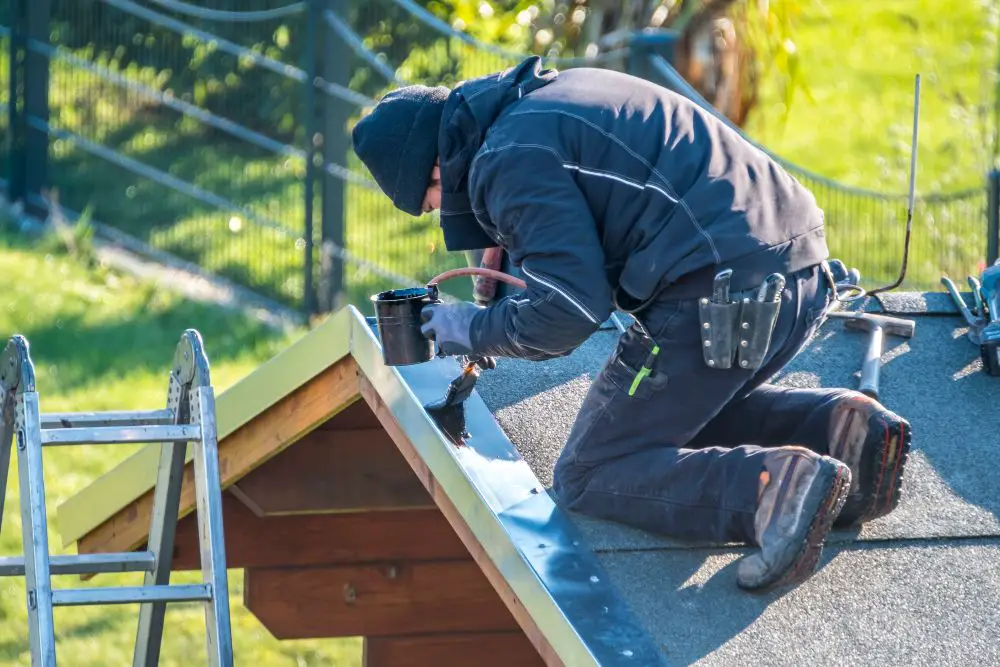
Different Types of Liquid-Applied Roof Coatings
- Silicone: Known for its durability, silicone-based coatings provide exceptional UV resistance and can withstand ponding water without deteriorating over time. Learn more about the advantages of silicone here.
- Acrylic: Acrylic coatings offer cost-effective solutions with good reflectivity but may require more frequent maintenance as they’re less resistant to ponding water. Check out this guide on the pros and cons of acrylic roof coating here.
- Aluminum: Aluminum-based coatings have excellent heat-reflective capabilities that help reduce energy costs; however, they might not be as durable or flexible compared to other options.
The Benefits and Drawbacks of Using Applied Roof Coatings
The primary advantage is the ability to create an effective barrier against rainwater penetration, UV rays, and fire hazards. This is especially important for commercial roofing projects.
Moreover, these coatings can be applied directly over existing insulation or roof membranes, making them a cost-effective solution for many roofing projects.
Nevertheless, there are some potential drawbacks that should be taken into account.
The main disadvantage is that liquid-applied coatings may not provide the same level of durability compared to other roofing materials for flat roofs like TPO or PVC membranes. In addition, they might require more frequent maintenance due to their susceptibility to ponding water and potential damage from foot traffic on low-slope roofs.
Ready for more insights? Check out this in-depth guide on roof coatings at Myrooff.
Making an Informed Decision
To sum up: Applied roof coatings offer several benefits but also come with certain limitations. It’s important to evaluate your specific needs and budget before deciding if this material is the right choice for your flat roofing project.
If you’re looking for flat roofing materials, some popular options include built-up roofing, TPO roofing, PVC roofing, synthetic rubber, modified bitumen, and asphalt shingles.
Key Takeaway:
This section provides an overview of applied roof coatings for flat roofs, including the different types such as silicone, acrylic, and aluminum. While these coatings offer benefits like weatherproofing and cost-effectiveness, they may not be as durable or resistant to ponding water compared to other materials like TPO or PVC membranes.
Standing Seam Metal Roofs for Flat Surfaces
Are you considering a standing seam metal roof for your flat surface? Great choice.
This stylish option offers longer-lasting protection compared to membrane roofs and adds a touch of elegance to any building. Let’s explore the aesthetics, design options, and cost considerations of this popular flat roofing material.
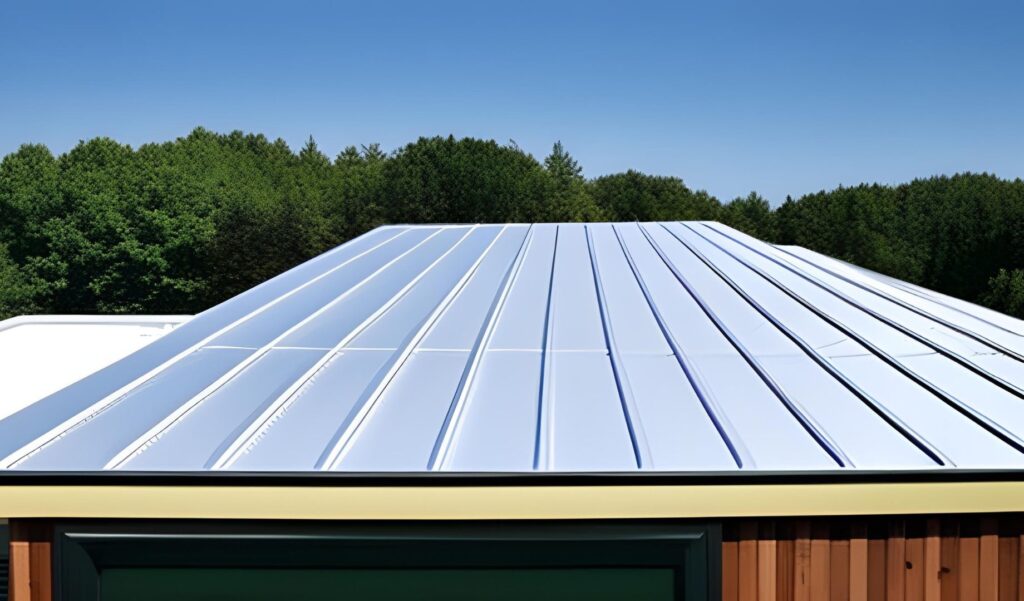
Aesthetics and Design Options with Standing Seam Metal Roofs
Metal roofs come in various colors, finishes, and profiles that can be customized to match your architectural style. You can choose from materials like aluminum or steel which are both durable and environmentally friendly. Check out some inspiration if you need ideas.
Cost Considerations When Choosing This Material
Budget-wise, standing seam metal roofs may be more expensive than other roofing materials for flat roofs initially. However, they often require less maintenance over time due to their durability.
- Choose between different colors, finishes, and profiles to match your architectural style.
- Consider the long-term benefits of standing seam metal roofs when comparing costs with other roofing materials for flat roofs.
- Ensure proper installation by experienced professionals for maximum durability and protection.
Self-Adhering Membrane Residential Roof Systems
Alright, let’s talk about self-adhering membrane residential roof systems. These roofing materials are an excellent choice for homeowners who want a reliable and cost-effective solution for their flat roofs.
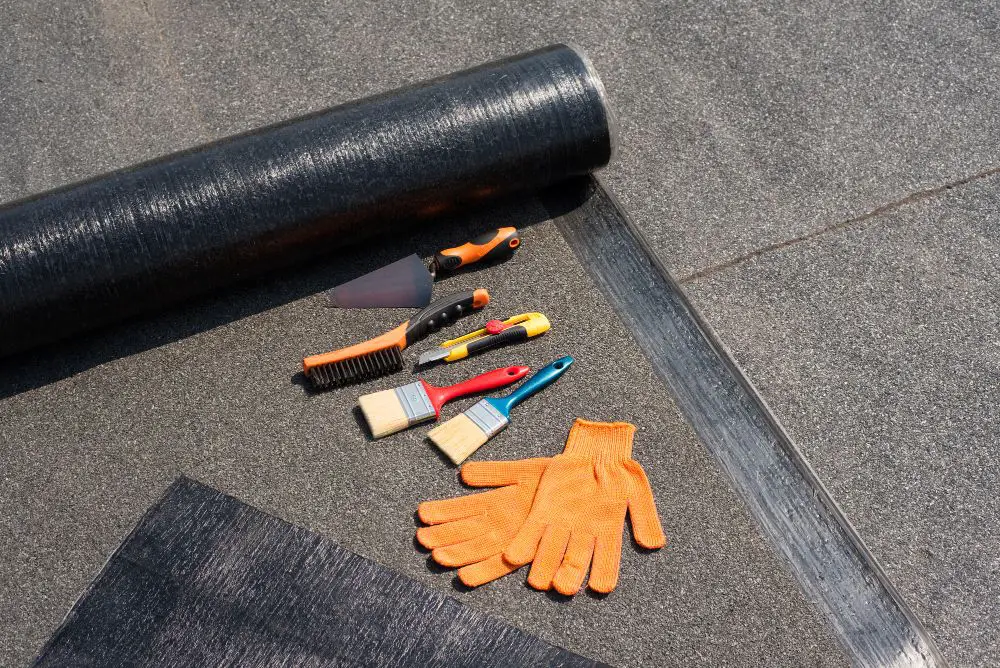
They provide lasting protection against snow, ice, and other elements while holding up well under foot traffic on low-slope roofs. However, it’s important to avoid using shingles on flat roofs due to the potential for leakage.
If you’re considering self-adhering membranes for your flat roof, check out this resource for more information.
Proper Installation Techniques for Self-Adhering Membranes
To ensure success with this type of roofing material, you need to follow the proper installation techniques:
- Clean and dry your roof deck thoroughly before application.
- Precisely align the membrane edges during installation to avoid gaps or overlaps that can lead to leaks later on.
- Firmly press down the membrane onto the surface using a roller or broom for maximum adhesion and minimal air bubbles trapped underneath it.
Tips for Maintaining Your Residential Flat Roof System
Maintenance is key when it comes to extending your flat roof’s lifespan. Here are some tips:
- Schedule regular inspections at least twice a year (spring and fall) or after significant weather events like storms or heavy snowfall.
- Clean debris off your roof regularly – leaves, branches, and dirt buildup can cause water ponding issues leading to damage over time.
- Keep a lookout for any indicators of wear and tear, such as ruptures or bubbles in the membrane – take quick action to stop further harm.
By following these guidelines, you’ll ensure your self-adhering membrane roof system remains durable and efficient for years to come.
Now that we’ve covered the popular roofing materials for flat roofs, let’s move on to the importance of regular inspection and maintenance practices.
Regular Inspection & Maintenance Practices for Flat Roofs
Let’s discuss the steps necessary to ensure your flat roof remains in optimal condition.
To ensure longevity and prevent costly repairs, regular inspection and maintenance are crucial for any roofing materials for flat roofs.
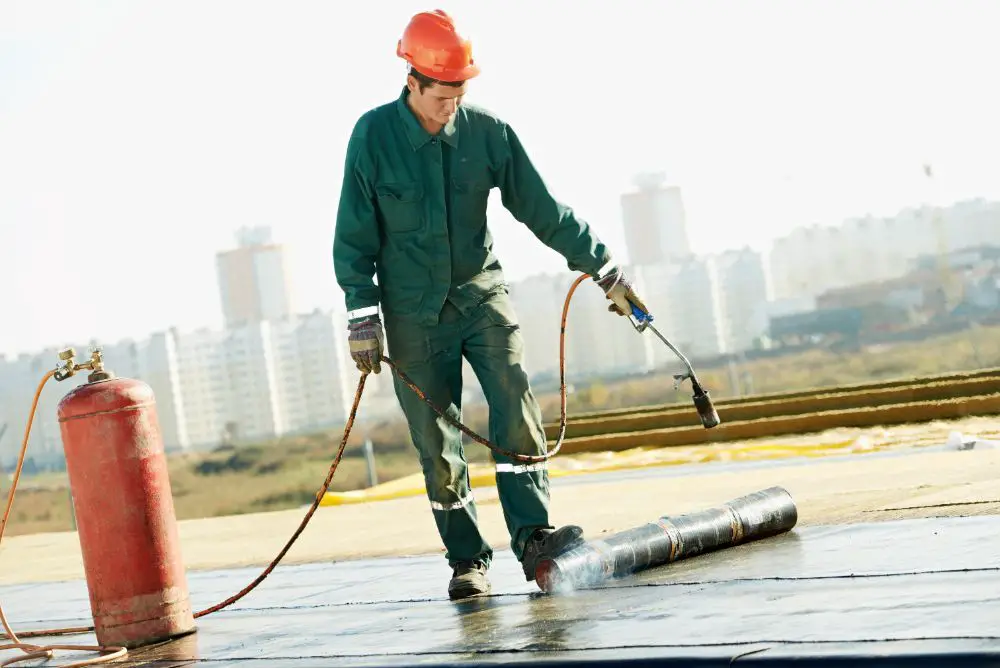
So, where do you start?
Signs Indicating It’s Time to Inspect Your Flat Roof
At the outset, be watchful for any indications of wear or harm on the roof’s surface.
If you notice sagging areas, pooling water after rainstorms, or damaged flashings around pipes, it’s time to inspect.
The Importance of Addressing Issues Promptly
Catching problems early can save you a fortune in repair costs down the line.
Prompt action is essential when dealing with leaks or punctures in single-ply membranes like PVC and TPO roofs, as well as built-up gravel layers that protect against drying out.
- Check flashings around pipes for cracks or rust regularly.
- Examine built-up gravel layers protecting membranes from drying out. Replenish top layer gravels periodically if necessary.
- In case of single-ply membrane roofs (e.g., PVC), look for punctures that may lead to leaks. Repair them immediately upon detection to prevent further deterioration.
Remember, a well-maintained flat roof can last for decades with minimal issues.
So, don’t skimp on regular inspections and maintenance – your wallet will thank you later.
FAQs in Relation to Roofing Materials for Flat Roofs
What Materials Are Used for Flat Roofs?
The most popular flat roofing materials include EPDM (ethylene propylene diene monomer) rubber, TPO (thermoplastic olefin), and PVC (polyvinyl chloride) membranes, modified bitumen cap sheets, built-up roofing systems, standing seam metal roofs, and liquid-applied roofing systems.
The choice of material depends on factors such as budget, climate conditions, and building requirements.
What Is the Best Underlayment for a Flat Roof?
The best underlayment for a flat roof typically depends on the chosen roofing material. For example, when using single-ply membranes like EPDM or TPO/PVC membranes, self-adhered or mechanically attached synthetic underlayments are recommended.
In the case of built-up roofing systems or modified bitumen cap sheet installations, asphalt-saturated felt, glass fiber mats, or polyester fabric can be utilized.
What Are the Issues with Flat Roofs?
Common issues with flat roofs include poor drainage leading to ponding water, which can cause leaks over time; membrane punctures from debris accumulation; thermal movement causing cracks in seams; UV damage resulting in reduced lifespan; improper installation practices affecting performance and durability; and increased maintenance needs compared to pitched roofs.
What Are Three Typical Top Applications on a Flat Roof?
Three typical top applications on a flat roof include protective coatings such as acrylics (water-based), silicones (UV-resistant), or polyurethane foams (insulating properties); green roofs with vegetation layers for energy efficiency and environmental benefits; and solar panel installations to harness renewable energy sources.
Roofing Materials for Flat Roofs – Recap
Selecting the correct roofing materials for flat roofs among the popular flat roofing materials can be challenging, but this guide has provided you with an improved comprehension of the pros and cons of different materials.
EPDM, TPO, PVC membranes, modified bitumen cap sheet roofing, built-up roofing systems, standing seam metal roofs, and liquid-applied roofing systems are all viable options to consider when building or repairing your roof.
It’s important to remember that regular inspection and maintenance practices are crucial in prolonging the lifespan of your flat roof. With proper care and attention, your chosen roofing materials for flat roofs can last for many years to come.
